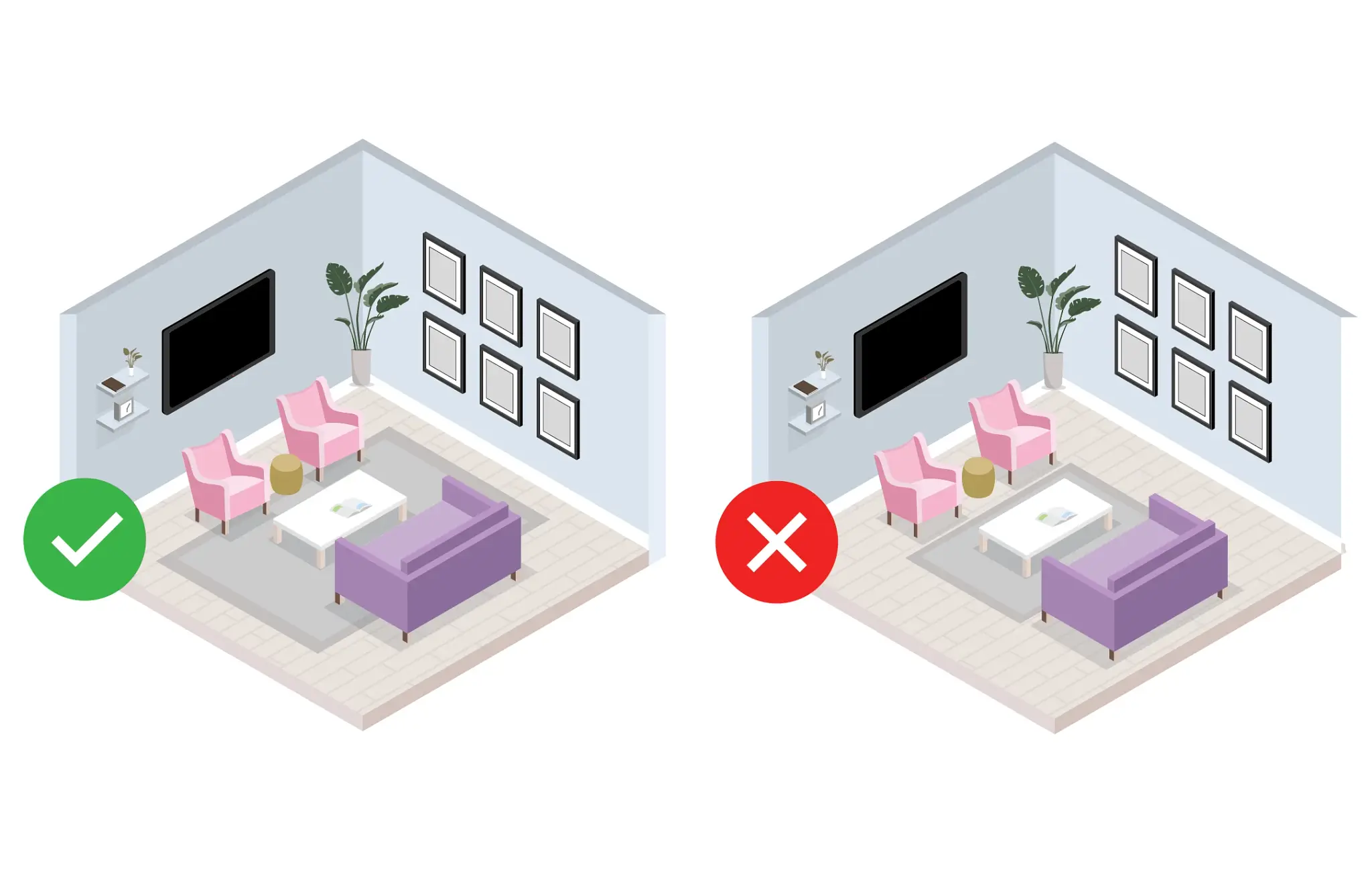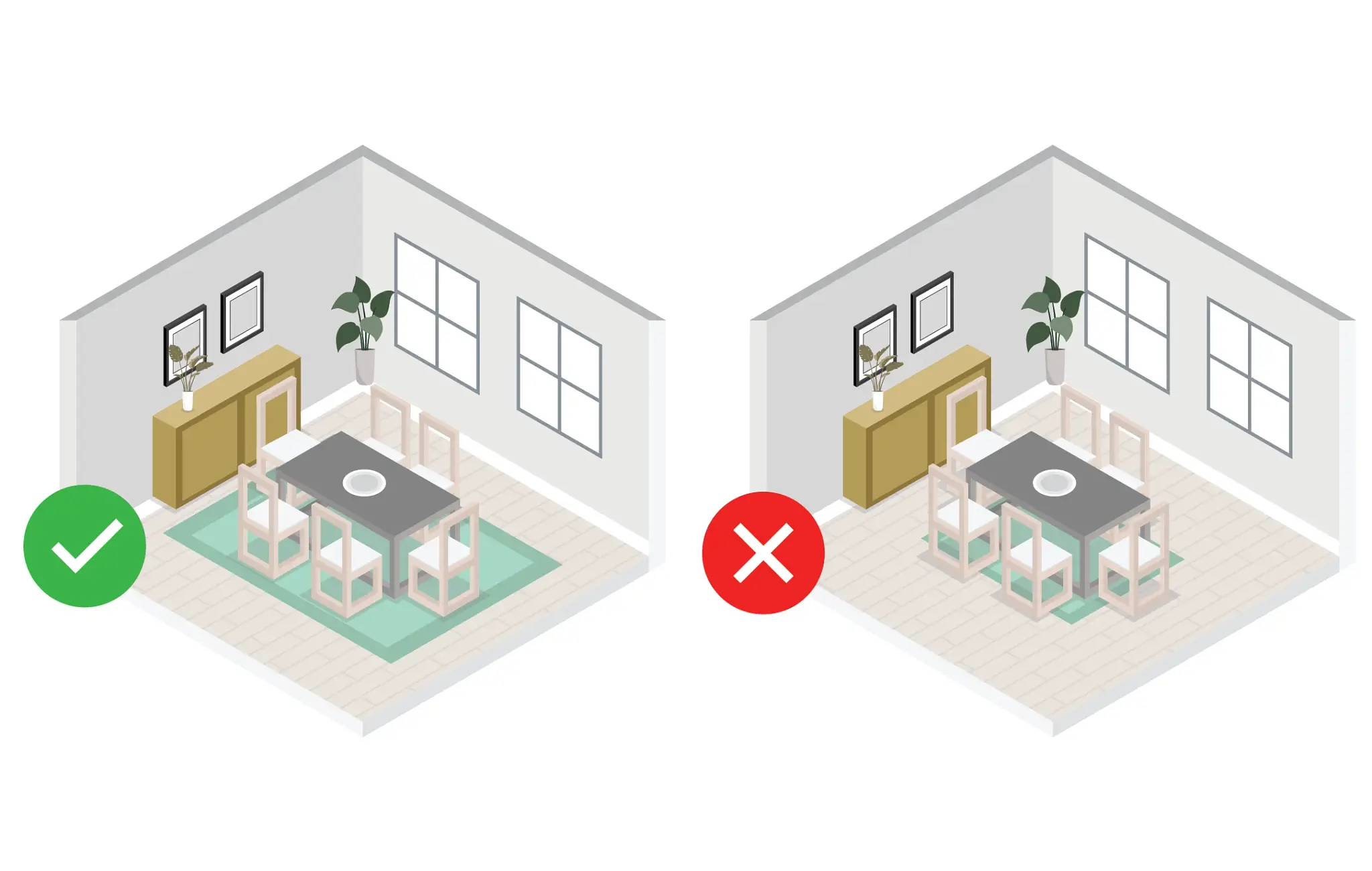
DESIGN IDEAS
Area Rug Buying Guide
When it comes to shopping for a new area rug, most of us could use a little help. After all, area rugs play a key part of your room’s décor, and with so many options, where do you even start? So forget the red carpet (unless that’s your color), because we’re showing you how to roll out the perfect carpet with our area rug buying guide.
Pick Your Size
Knowing the right size will help you narrow down your search. Here, we break down the ground rules by room. And when in doubt, always go bigger.
Living Room:
Your area rug should extend at least to under the front legs of the furniture in your living room, whether it’s a sofa or a pair of chairs. Avoid “floating” the furniture around the perimeter.
Dining Room:
Whether you have a round or rectangular dining table, the area rug should extend at least 24 inches around every side. This will make the dining room feel larger and balanced, and you won’t have to worry about chairs getting caught on the rug when backing out.
Bedroom:
Here, the main guide is that you shouldn’t have your feet touch the bare floor when getting out of bed. Therefore, make sure your rug extends closer to the nightstand. Or if you’re on a budget, you can throw a 2×3 rug on either side.
Pick Your Weave
Hand-knotted:
This means rug fibers are tied by hand on a loom. As with any handmade craft, this means top quality, as well as a higher price.
Tufted:
This is created by looping yarn and then cutting the tops to create a flat, high pile. Tufted rugs are ultra-soft, though they can be prone to shedding and require regular vacuuming.
Hooked:
It’s the same as a tufted rug, only the loops are left intact. This means less shedding, but just keep in mind that loops can get snagged by heels or pets’ nails.
Flat woven rugs:
Also known as a dhurrie rug, these have no pile and are great for high-traffic areas (especially since many are reversible). Just be sure to use a rug pad since they tend move around.
Machine woven:
Other than hand-knotted, any of the above weaves can be machine woven, offering a cost-effective alternative.
Choose Your Material
The most important thing to consider here is where your rug will be. If your rug will be in a high-traffic area or a room that’s subject to spills, choose a material that can handle it.
Wool:
One of the most durable rug materials, wool’s fibers are naturally crush resistant and super soft. Even better, the sheep’s natural oils actually repel water, dust, and dirt—making this a great option for area rugs in the dining room and by the front door.
Polypropylene:
An affordable alternative to real wool, this is a great option for those on a budget. Polyester and nylon are also great man-made options.
Cotton:
Also versatile and low-maintenance, cotton rugs are great because they are often reversible and machine washable. Because of this, cotton rugs are the ideal option for the kitchen or bathroom.
Jute or Sisal:
You’ll know it by the rope-like fibers, most often in a natural beige color. These durable, natural materials are less likely to hold stains, but just consider they aren’t the softest option.
Silk:
The most luxurious and elegant option is extremely soft with a gorgeous shimmer. However, silk is very delicate and best suited for areas with low traffic, like a bedroom area rug.
Choose Your Design
Now it’s time for the fun part of our area rug buying guide! After you narrowed down all the technical specs, all that’s left to do is pick your favorite design from the bunch. Luckily, the only rule here is to choose what you love, but there are some things to consider:
- If your walls and furniture are mostly neutral, go with a bold pattern or color and let your area rug be the focal point.
- Conversely, if your walls or furniture are more colorful, go with a solid rug or a tonal area rug.
- Patterns are the most forgiving for hiding wear and tear.
- Just like furniture, dark rugs make the room feel smaller, while lighter colors will open up a tight space.












